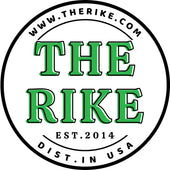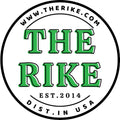Unlocking Nature's Pharmacy: The Healing Power of Herbal Medicine
Throughout human history, plants have served as a fundamental source of healing and medicinal properties. From ancient civilizations’ reliance on herbal remedies to modern-day wellness trends, herbal medicine remains a respected and valuable part of healthcare. This article delves deep into the world of herbal medicine—its history, the science behind it, popular herbs, and how to incorporate them into your daily life.
1. A Brief History of Herbal Medicine
Herbal medicine is a practice as old as humanity itself. Evidence of its usage dates back thousands of years, with ancient texts from Egypt, China, and Greece documenting the therapeutic benefits of plants.
1.1 Ancient Practices
The Ebers Papyrus, an ancient Egyptian document from 1550 BC, lists numerous medicinal plants. In Traditional Chinese Medicine (TCM), herbs have been meticulously categorized for their properties for over 2000 years. Similarly, the Ayurvedic system from India has extensively used herbs to balance bodily energies.
1.2 The Middle Ages and the Renaissance
During the Middle Ages, herb gardens became common among monasteries, serving as sources of natural remedies. The Renaissance sparked renewed interest in herbal studies, blending traditional knowledge with new scientific inquiry.
1.3 The Modern Era
The 19th and 20th centuries saw the rise of synthetic pharmaceuticals, overshadowing herbal remedies. However, the late 20th century witnessed a resurgence of interest in natural medicine, driven by a desire for holistic health and well-being.
2. The Science Behind Herbal Medicine
Understanding herbal medicine's effectiveness requires examining the components responsible for its healing properties. Plants contain a diverse range of bioactive compounds that contribute to their health benefits.
2.1 Phytochemicals Explained
Phytochemicals are natural compounds found in plants, categorized into primary metabolites (essential for plant growth) and secondary metabolites (which serve various ecological functions). Secondary metabolites, such as flavonoids, terpenes, and alkaloids, play crucial roles in herbal medicine.
2.2 The Role of Clinical Studies
While traditional knowledge forms the foundation of herbal medicine, clinical studies over the past few decades have provided empirical support for many herbal remedies, demonstrating their efficacy in treating various conditions.
3. Popular Herbs and Their Healing Properties
3.1 Chamomile
Chamomile is renowned for its calming effects, often used to alleviate anxiety and promote sleep. Its anti-inflammatory properties also make it beneficial for digestive issues.
3.2 Echinacea
Commonly used to boost the immune system, Echinacea has been studied for its ability to reduce the duration and severity of colds.
3.3 Turmeric
Known for its vibrant yellow color, turmeric contains curcumin, a powerful anti-inflammatory agent that has gained popularity for its potential in managing chronic inflammation and pain.
3.4 Ginger
Ginger has long been recognized for its digestive benefits and is frequently used to alleviate nausea and motion sickness.
3.5 Peppermint
Peppermint is often used for its soothing effects on digestive issues and its ability to relieve headaches.
4. How to Use Herbal Medicine Safely
While herbal remedies can be beneficial, it is crucial to use them safely and effectively.
4.1 Consultation with Healthcare Providers
Before starting any herbal treatment, consultation with a healthcare provider, especially for those already on medications or with underlying health conditions, is advised.
4.2 Dosage and Preparation
Understanding proper dosage and preparation methods is essential. Herbs can be consumed as teas, tinctures, capsules, or extracts, each format having its specific instructions.
5. The Future of Herbal Medicine
As interest in holistic health continues to grow, the future of herbal medicine looks promising. Research into the efficacy and safety of various herbs will likely expand, paving the way for greater integration of herbal practices in mainstream healthcare.
5.1 Integrative Medicine
Combining conventional and alternative medicine approaches offers a more comprehensive path to health, with herbal medicine playing a significant role.
5.2 Sustainability and Ethical Sourcing
The sustainability of herbal resources is crucial. As demand for herbal products increases, it is vital to source them responsibly to preserve ecosystems and biodiversity.
6. Incorporating Herbal Medicine into Daily Life
Incorporating herbal medicine into daily life can be simple and rewarding.
6.1 Simple Home Remedies
Learn how to make simple herbal remedies at home, such as herbal teas, tinctures, and salves. For instance, brewing chamomile tea can be a calming end to a long day.
6.2 Culinary Uses of Herbs
Many healing herbs can be easily added to meals. For example, adding fresh ginger to stir-fries not only enhances flavor but also provides numerous health benefits.
6.3 Meditation and Mindfulness Practices
Incorporate herbal practices with meditation and mindfulness to enhance mental well-being. The scents of certain herbs can be used in aromatherapy to promote relaxation.
7. Conclusion
Herbal medicine offers a treasure trove of healing opportunities grounded in millennia of use. As we unlock nature's pharmacy, it becomes evident that plants have an integral role in our overall health. Whether used alone or as complementary treatments, herbal remedies can contribute to a more holistic approach to wellness. As with any medicine, informed use and respectful sourcing can help ensure these natural remedies continue to benefit future generations.





Leave a comment